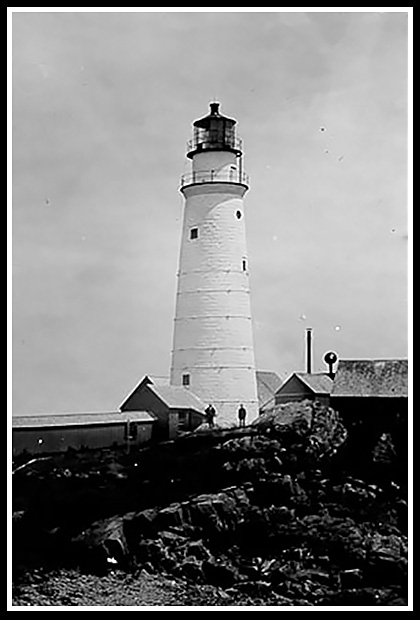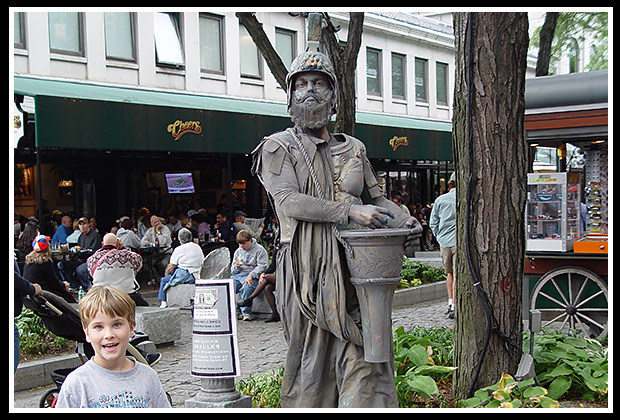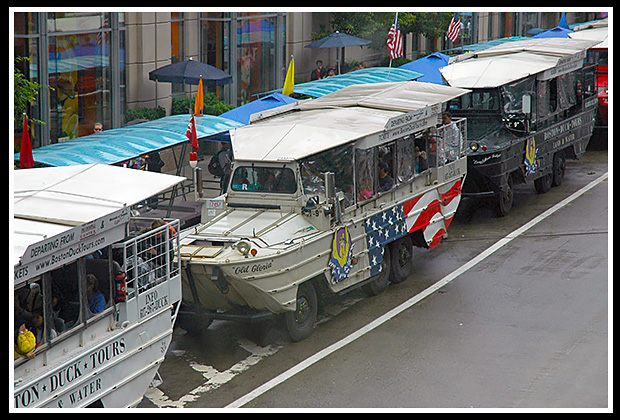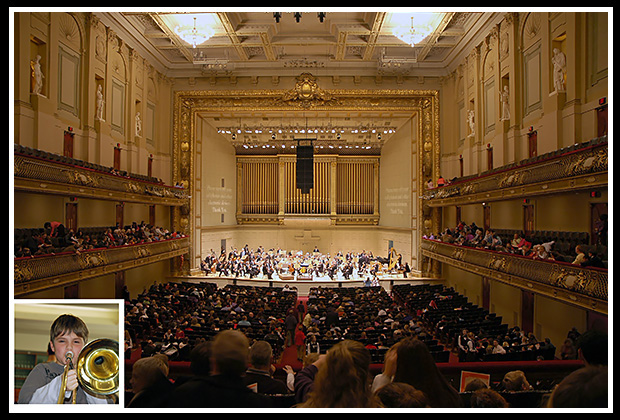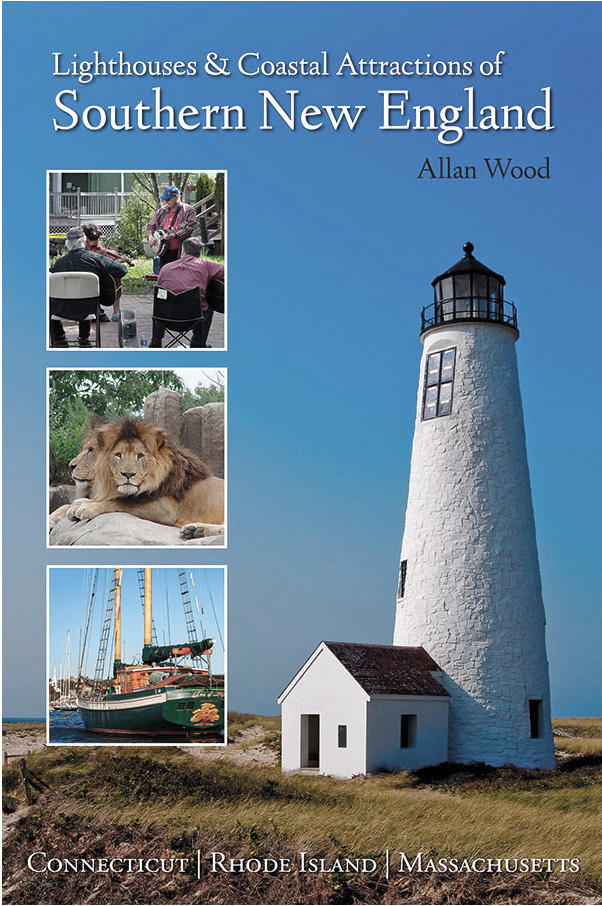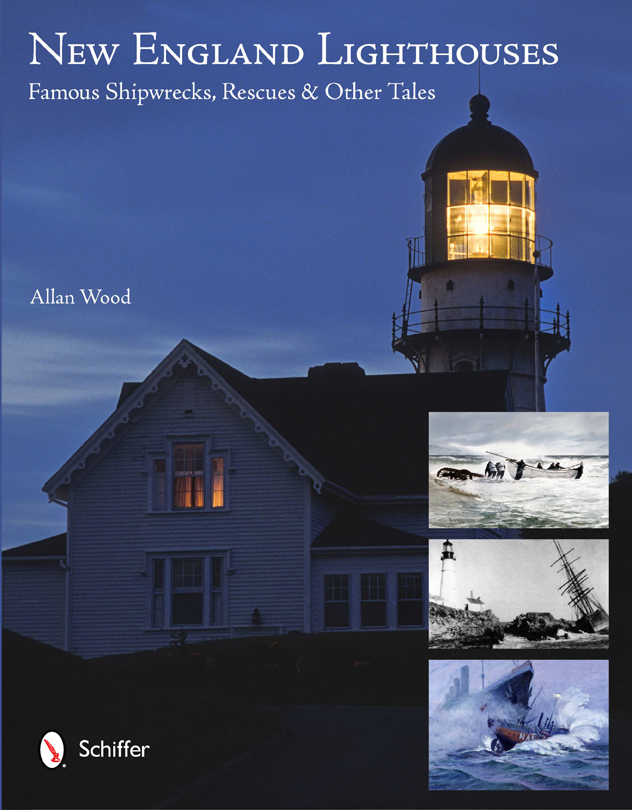Boston Harbor Lighthouse
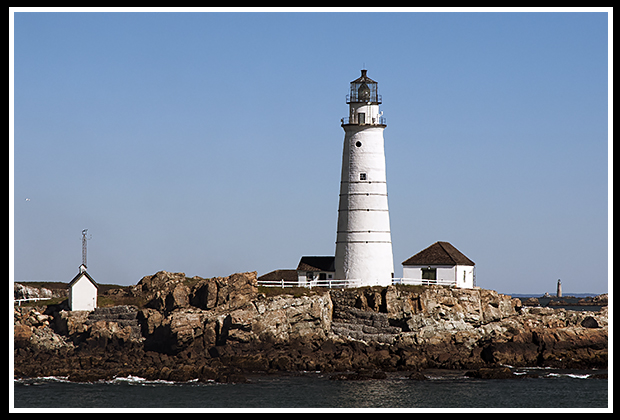
Boston, Massachusetts
Built in 1716
Location:
On Little Brewster Island marking the entrance to Boston Harbor. Tours are offered to cruise pass the island and park tours are available to get on the island and explore the lighthouse during the summer months.
Latitude: 42° 19' 42" N
Longitude: 70° 53' 24" W
Historic Stories:
Boston Light Station is the oldest lighthouse in the country, however, technically the tower itself is the second oldest because it had to be rebuilt in 1783.
In 1716, the Colony of Massachusetts Bay constructed and lit the first light tower in the "New World" overlooking Boston Harbor. At this time there were only 70 lighthouses in existence on earth.
In 1719, the nation’s first fog signal, a canon, was created and used on Little Brewster Island until it was eventually replaced by a 1375-pound fog bell operated by clockwork machinery in 1851.
Tragedies at Boston Lighthouse In the Early Years
The first light Keeper was George Wothrylake. On a cold November day, in 1718, he was heading back to the lighthouse on a sloop from Boston after collecting his pay and gathering supplies with his wife Anne, his daughter Ruth, his servant George Cutler, and a friend, John Edge. His other daughter Ann, and a friend, Mary Thompson, watched from shore. The seas were choppy from the gusts of wind that were kicking up from an approaching storm. The sloop was anchored a distance from the lighthouse. As a canoe was sent out to bring the five passengers back to the lighthouse, the wind picked up and forced the little boat to capsize from the weight of the six passengers, spilling them into the freezing waters and drowning all.
At the same time a young 12-year old Benjamin Franklin, was encouraged by his brother to put his locally known writing skills in creating a poem based on the disaster. Franklin wrote a poem called “The Lighthouse Tragedy” and made copies to sell on the streets of Boston.
The second keeper, Robert Saunders, drowned just days after taking the job.
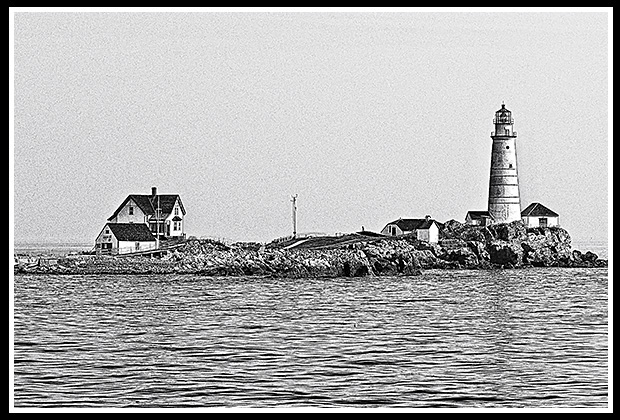
The third keeper John Hayes asked that "a great gun be placed on the Said Island to answer ships in a fog." He was granted his request but the tasks related to maintaining the cannon were added to his duties without an increase in pay. Hayes protested and the Council increased his pay to 70 pounds, as long as he didn't attempt to make any money entertaining guests on the island. The cannon was the first colonial fog signal.
A nasty fire occurred at the lighthouse lantern room in early 1720 when a couple open fire oil lamps tipped over and set a wooden bench nearby on fire. Repairs were completed in a couple months, but the Council blamed Hayes for the accident and held back his pay until he came to provide an adequate explanation. After hearing his explanantion of trying to put out the fire, the Council concluded that the fire started not out of neglect on the keeper's part and granted him back his pay.
In the mid-1700’s when lightning struck the tower a number of times, a lighting rod was originally approved for installation, but was hampered at first by local religious individuals who didn’t want to interfere with the acts of God. A lightning conductor was eventually placed on the tower in the 1770s, it was one of many inventions developed by Ben Franklin.
Boston Light During the American Revolution
The lighthouse was the scene of several important battles during the Revolution, as the British occupied it as a strategic post. First, the Colonial Minutemen set fire to the lighthouse in July 1775 to strike back at the British blockade, which was created after the "Boston Tea Party" where Colonists were in revolt because of taxes imposed upon them. The fire was not as effective as hoped, and was quickly repaired.
General George Washington sent a second raiding party to the island, catching the British by surprise, and set fire to everything they could find. As the men were performing their orders on the island, the tide had gone out and stranded them as they were set to leave. As they tried to move their boats over rocks to escape, they found themselves in front of a small British flotilla that had just arrived and a battle ensued. Although the British outnumbered the Colonials, Washington's men caused severe damage to one of the British vessels as cannon shots fired from nearby Nantasket destroyed one vessel, causing the small fleet to retreat. The small Colonial troop only lost one man in the battle.
On June 13, 1776, armed Colonials fired upon the British blockaders on the island, driving most of them away. One British vessel was left anhored at Little Brewster Island, and those British soldiers, before retreating, set gunpowder in the lighthouse and blew it up.
| The lighthouse was rebuilt years later in 1783. The present tower has been standing for more than 200 years. |
|
During the War of 1812, on a summer day in 1813, lighthouse keeper Jonathan Bruce and his wife Mary watched from their station on Little Brewster Island, the battle between the American Navy’s U.S.S. Chesapeake and the English warship HMS Shannon, in which Captain Lawrence of the Chesapeake was known to have made his famous cry "Don’t give up the ship!" as his ship was rendered helpess and was boarded by British troops. The Chesepeake lost the battle and Captain Lawrence was killed in the fight.
In the mid-1840’s, Keeper Tobias Cook set up a cigar factory on Brewster Island next to the lighthouse. Here he employed young women to manufacture what he called "Spanish Cigars". It was an effort to deceive Boston smokers into thinking that the cigars were imported. These poor women toiled under what are considered miserable conditions under Cook. He was removed from duty when he was later discovered by authorities in 1849.
Shipwrecks and Rescues
By Boston Harbor Lghthouse
Around Little Brewster Island through the years there were many shipwrecks, and daring rescues made by lighthouse keepers, and by the life saving station at Point Allerton, located at the end of a long peninsula on the mainland in Hull. The station was about 2 miles across the shipping channel from the lighthouse and the island, most ships would have to come through this channel to safely enter Boston Harbor. During many storms signals were coordinated by the keeper of Boston Light, and the lifesavers of Hull, as the keeper's main job was to maintain the light burning, where the lifesavers were specially trained in rescues.
A little over 750 yards away from the lighthouse is a group of jagged rock formations known as Shag Rocks. This deadly outcrop of rocks were one of the main reasons for the initial construction of Boston Light at its location on Little Brewster Island nearby, to steer mariners away from these jagged rocks to the safety of the harbor.
The Rescue of the Maritana By the Hull Lifesavers
The worst tragedy in Boston Harbor occurred when the massive square rigger ship, the Maritana was caught in a fierce November storm in 1861, of gale force winds and blinding snow, and became wedged on Shag Rocks around 1:00 A.M on November 3. Around 8:30 that morning the storm and breaking waves were too much for the vessel and it broke in two, sending many of its crew and passengers into the icy waters. Only twelve surviviors were able to climb onto the pinnacle-like rocks and wait to be rescued.
Because the storm was so deadly, Keeper Moses Barrett was unable to leave his post the following morning when he saw the wreck, and tried to signal the Hull Lifesavers, who did not see the flag through the blinding snow until later that afternoon when the storm started to dissipate. The lifesavers from Point Allerton were finally able to rescue all twelve survivors, but 26 people drowned in the Maritana tragedy.
Keeper Thomas Bates Rescue of the Fanny Pike
Keeper Thomas Bates was promoted to Keeper of Boston Light after rescuing the keeper of Minot's Ledge Lighthouse, and other rescues. On a severe winter storm in January 31, 1882, he saw the coal schooner Fanny Pike get caught in a storm and was driven on Shag Rocks. The ship broke in two, with half her hull quickly sinking, but the crew were able to stay on the wreck. Keeper Bates along with the help of his assistants, Charles Pochaska and George G. Bailey, along with a young fisherman who lived on the island, was able to row out and safely rescue all survivors without any tragedy.
Rescue of the Calvin F. Baker By Hull Lifesavers
During one of the worst storms of the century of hurricane force winds and blinding snow on November 26-28, 1898, known as the "Portland Gale" for the lives lost of the steamer that sank during the storm. The schooner Calvin F. Baker was sailing from Baltimore to Boston with a load of coal and was blown onto the northern end of Little Brewster Island at 3:00 a.m. on November 27th. It grounded about 75 yards from the rocky shore, near Boston Harbor Lighthouse. The storm was relentless and the crewmembers could only hold on to the rigging and wait for a break in the storm to be rescued.
Keeper Pingree was unable to leave his station with the intensity of the storm and its fierce winds engulfing the area, and he had no adequate equipment or lifeboat strong enough to enter the churning waters. He was able to put out a distress signal to the Hull lifesavers of Point Allerton, but they too were unable to risk going out in open waters until the storm finally calmed somewhat on the following morning of November 28th.
With the help of the tug Ariel, Captain Joshua James of the lifesavers, along with members of his crew and some volunteers, were towed across the open waters, to about a quarter mile from shore as the seas were still heaving. They launched their surfboat and rowed with all their might to rescue the crew of the Calivin F. Baker who were literally frozen on the rigging on what was left of the wreck, and barely alive. Five crewmembers were rescued and survived, two others were swept off the deck and drowned, and one crewmember froze to death. Becuse of the ferocity of this historic storm, it took 30 hours to finally rescue the crew.
Keeper Jennings Rescues Survivors of the Wreck of the U.S.S. Alacrity
One of the most daring rescues by a Boston lighthouse keeper involved the rescue of the U.S.S. Alacrity by Keeper Charles H. Jennings. On February 3, 1918, the U.S.S. Alacrity was wrecked on the ice-covered ledges off Little Brewster Island just before daybreak during a winter storm. Jennings realized that time was critical and fearing the wreck could slip off the ledge and sink immediately, he decided to attempt the rescue with his crew before putting up the distress signal to the lifesaving station in Hull.
He had some lifesaving equipment given to him by the Massachusetts Humane Society, and one was a canon like Lyle gun to shoot a line to a wreck. However, after four failed attempts, Jennings decided to grab his wooden dory and brought it down to the shore. Then, along with the help of two local sailors visiting him, whose last names were Hero and Harvey, they launched the dory over the ice and into the churning surf.
Twenty-four men, were clinging to the wreck in the freezing February temperatures, as the tenacious keeper and his crew dragged the boat over and between ice flows and finally reached near the wreck. Finally, after a number of attempts, they were able to secure a line to the survivors. After four time-consuming heroic trips from the wreck to the shore in the small boat, Keeper Jennings was able to sucessfully rescue all twenty-four men of the U.S.S. Alacrity, without any lives lost.
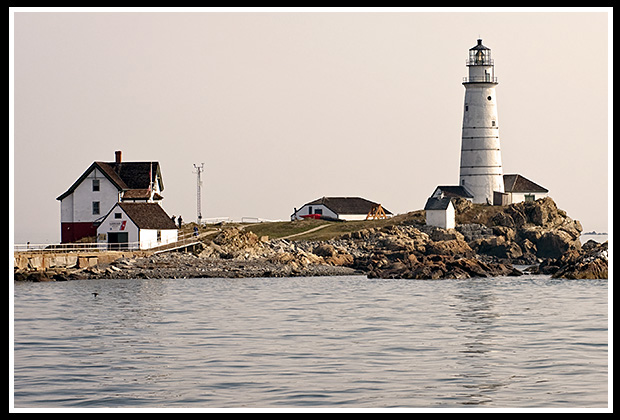
Boston Harbor lighthouse was the first to be constructed to be operated by appointed keepers, and it was the last lighthouse to be automated in 1998. It had more than 60 keepers tending it during its series.
In 2013, Boston Harbor Lighthouse was chosen as one of a series of five New England lighthouses, painted by artist Howard Koslow, for the "Forever" stamp collection sold at all US Postal stations.
Today, Boston Harbor Lighthouse is the only beacon in the nation that retains an official keeper. Her name is Sally Snowman and she maintains the lighthouse 7 months of every year, and the rest of the time, she visits the island about once a month to ensure that everything is in fine working order. She dresses in colonial period costume for visitors each summer season, and is directly involved in recruiting, training, and scheduling Boston Light’s 70 auxiliary volunteers. She is also the 70th keeper at the beacon, and its first woman keeper.
On September 14, 2016, Boston Light celebrated its 300th anniversary.
Places to Visit Nearby:
| Visit the New England Aquarium by the waterfront and famous Faneuil Hall Marketplace nearby for specialty shopping, and cultural arts and events. |
Children are surprised by Faneuil Hall statues moving. |
The waterfront also offers an outdoor museum for visitors to explore the Nation’s oldest Naval ship, the USS Constitution (Old Ironsides).
Boston offers plenty of cultural and diverse events for any tourist.
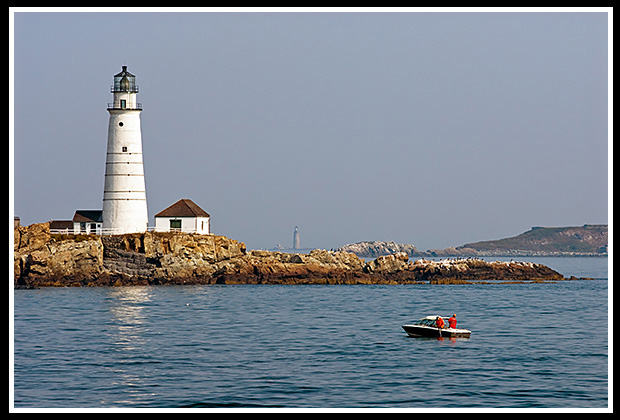 |
There are also trips you can take to view three lighthouses, in including Boston Harbor Lighthouse, as part of a narrated tour by the National Park Rangers. |
The Boston Harbor Island Park Service in coordination with the newly formed Boston Harbor Now alliance, have developed an exciting 2-hour narrated tour involving the maritime history of Boston Harbor. Visitors can get close up views of Graves Lighthouse, Long Island Head Lighthouse, and the famous Boston Harbor Lighthouse on Little Brewster Island.
Note: Currently (2023) the Boston Harbor Lighthouse tower is closed to the public, so their are no lighthouse tower tours on Little Brewster Island, as the building is undergoing necessary repairs from winter storms.
| You'll find great views of the Boston harbor skyline from any of the tours out in the harbor. | 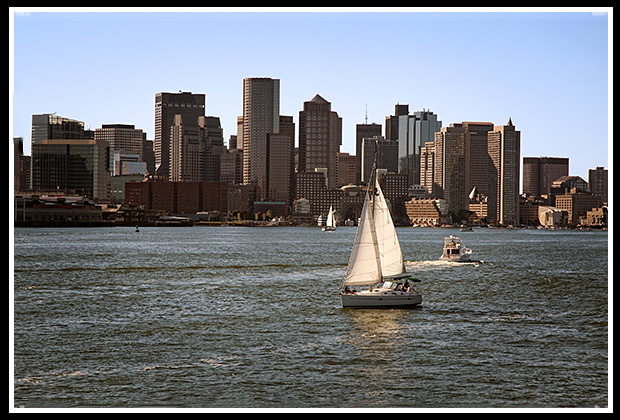
Boston Harbor Skyline |
Boston is one of the largest cities on the east coast with plenty of rich history; you can take guided walking tours to Boston’s historic places, like the Freedom Trail, or explore the Bunker Hill Monument that marked one of the starting events of the American Revolution.
Visit some of Boston’s 40 museums. Take in some of its cultural and varied events and nightlife to enjoy.
Boston Duck Boat Tours |
Check out the unique Boston Duck Tours for a true land and water experience. |
Get involved and hike in the Boston Harborwalk tours, which connects Boston's waterfront to open space networks and various trails surrounding Boston.
Check out Boston's North End, Boston's oldest neighborhood, after visiting Boston Harbor Light and surrounding lighthouses in the harbor from Long Wharf. You'll plenty of Italian cuisine and other ethnic cuisine, and lots of festivals and events year round.
Boston's South End also boasts some incredible restaurants with many buildings displaying elegant Victorian architecture. It too has plenty of ethnic and arts festivals year round.
Boston Symphony Hall. |
For those who enjoy a bit of cultural activity, visit the Boston Symphony Hall, home of the Boston Symphony and Boston Pops orchestras. |
In addition to musical shows and events, families can learn about musical instruments from musicians. The Museum of Fine Arts is one of the most comprehensive art museums in the world with a collection of nearly 45,0000 works.
The Huntington Theatre Company is Boston’s leading professional theater for those who want to take in a show, or visit a classic show provided by the world famous Boston Ballet. If you love loud, crazy, and let’s say something definitely different, you must see Blue Man Group!
Contact Info:
Boston Harbor Island Park Service
191W Atlantic Ave
Boston, MA 02110
Phone: (617) 223-8666
Boston Harbor Now
1 Constitution Road
Boston, MA 02129
Phone: (617) 223-8667
Email: info@bostonharbornow.org
Boston's Waterfront Directions
Directions to Boston's Rowes Wharf for Harbor Cruises:
- Heading North, be wary of construction detours:
- Take US Route I-93 North to the Logan Airport I-90)/S. Station exit towards Worcester, Exit #20
- Continue towards Frontage Road/South Station
- Bear right towards Kneeland Street/Downtown
- Continue on Atlantic Avenue
- Rowes Wharf is on the right.
- Heading East towards Boston, be wary of construction detours:
- Take Take US Route I-90 East (Massachusetts Turnpike) to the 24 A-B-C/I-93/South station exit towards Concord NH/Quincy.
- Continue towards South Station, Exit #24A
- Continue on Atlantic Avenue
- Rowes Wharf is on the right.
- Heading South, be wary of construction detours:
- Take US Route I-93 South to the Purchase Street exit, Exit #23
- At the traffic light, turn left onto Congress Street
- At the next traffic light, turn left onto Atlantic Avenue
- Rowes Wharf is on the right.
Directions Public Subway Transportation (MBTA):
-
Take the Blue Line to Aquarium Station
-
Turn LEFT immediately out of the station
Continue on Atlantic Avenue -
Rowes Wharf is on the left.
Directions to Boston's Long Wharf for Harbor Cruises
- Heading South, by wary of construction detours:
- Take US Route 93 South to Exit 24A bearing right on off ramp (Government Center).
- Follow signs to Aquarium Wharf. Boston Harbor Cruises is located between the Aquarium and Marriott Hotel.
- Heading North, by wary of construction detours:
- Take US Route 93 North to Exit 23 (Government Center).
- Follow signs to Aquarium Wharf.
- Boston Harbor Cruises is located between the Aquarium and Marriott Hotel
Local Boat Tours For Visitors
Boston Harbor Islands Park Service and Boston Harbor Now
Narrated trips by the park rangers are provided with boat trips running every weekend during the summer where visitors can see Boston Harbor Lighthouse, Graves Lighthouse, and Long Island Head Lighthouse. They have been directly involved in the preservation of all 34 islands in the harbor. Boston Harbor Now is the non-profit partner of the Boston Harbor Islands National and State Park. They also offer public ferry service, cultural and recreational activities, etc.
Note: Boston Light is undergoing repairs from damage caused by a series of devastating winter storms, therefore, there are no tours of the lighthouse tower in 2023.
Boston Harbor Island Park Service
191W Atlantic Ave
Boston, MA 02110
Phone: (617) 223-8666
Boston Harbor Now
1 Constitution Road
Boston, MA 02129
Phone: (617) 223-8667
Email: info@bostonharbornow.org
Books to Explore
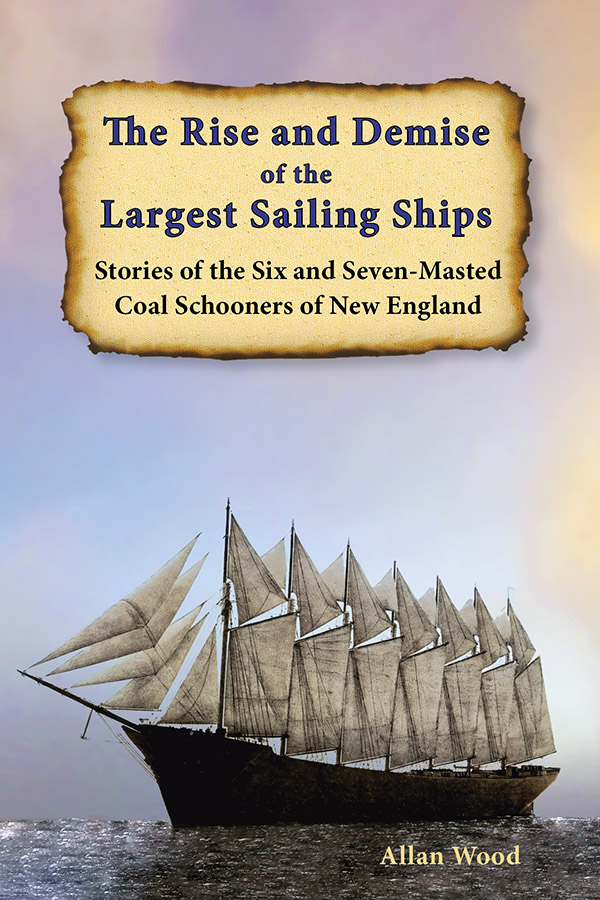
To order a signed paperback copy: Available from bookstores in paperback, hardcover, and as an eBook for all devices. |
The Rise and Demise of the Largest Sailing Ships: In the early 1900s, New England shipbuilders constructed the world’s largest sailing ships amid social and political reforms. These giants of sail were the ten original six-masted coal schooners and one colossal seven-masted vessel, built to carry massive quantities of coal and building supplies, and measured longer than a football field! In fact, Boston was one of the main ports for these massive ships for delivery. This book, balanced with plenty of color and vintage images, showcases the true stories that followed each of these eleven mighty vessels, including their final voyages. Some of these vessels were built in nearby Quincy. |
Lighthouses and Coastal Attractions of Southern New England: Connecticut, Rhode Island, and Massachusetts, published by Schiffer Publishing, provides special human interest stories from each of the 92 lighthouses, along with plenty of indoor and outdoor coastal attractions and tours, with contact info to help with your vacation plans. You'll find plenty of Boston attractions and tours, along with whalewatching, sailing, local cruises, and lighthouse tours listed as well. Look inside!
|
|
This image-rich book contains over 50 stories of famous shipwrecks and rescues around New England lighthouses, and also tales of hauntings. In one of New England's most devastating storms during the Thanksgiving week of 1898, you'll find stories of the sinking of the giant steamship Portland leaving Boston for Portland in Maine, and famous rescues in the "Perfect Storm". |
You'll find this book and my lighthouse tourism books published by Schiffer Books, or they can be found in many fine bookstores like Barnes and Noble.

